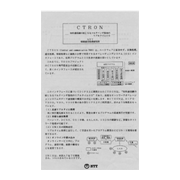In 1984, modularization of software was discussed at the research center of Nippon Telegraph and Telephone Public Corporation (now called Nippon Telegraph and Telephone Corporation (NTT)). The feasibility of shared use of DIPS and DEX software was also discussed, particularly from the perspective of using common software for both exchanges and information processing. With this consideration in mind, research began on a common OS in 1985. The goals were to absorb differences in processor architecture with the OS API, contribute to the modularization of the OS program itself (including applications), and provide a standard specification of the OS interface at the lowest possible level.
NTT also started INSC processor research, with the aim of using common processors for both exchanges and information processing, and discussion covered a range of issues including in-house fabrication of LSI. It was decided that exchanges could be configured based on processor chips that were the specialties of vendors and that the approach would involve a shared basic architecture. Studies began accordingly.
Based on a number of related standardization trends, and for a variety of reasons -- such as superiority of real-time characteristics, potential for placement on the agenda for standardization, and potential for application to both exchange processing and information processing (which was NTT's aim) -- it was decided to adopt a policy of launching the project as a private consortium. It was also decided to proceed with studies on the specifications of a real-time OS interface applicable to communications (CTRON) based on the real-time OS/API being studied by the independent and unaffiliated TRON Project.
The CTRON interface followed the original plan: hierarchically specifying the OS interface, absorbing differences in processor architecture at the lower-level OS interface, and specifying the API to ensure portability of application programs while ensuring portability of the higher-level OS function program itself.
Studies on the basic architecture and OS interface of CTRON began in 1985, and the first version of the basic interface (the lowest level OS interface) was announced soon after in 1986. The higher-level OS interface was called the extended OS interface, and it was announced in stages from 1986 to 1988.
In parallel with studies on the interface specifications for ensuring the portability of higher-level software (which was the goal of CTRON), experimental studies were conducted to determine whether or not it was really possible to port higher-level software between systems comprised of respectively different processors. These experiments were conducted in the form of joint research with the University of Tokyo. An experiment facility was built at the Komaba Campus, and research including porting experiments between platforms based on different processors was conducted from 1988 to 1989.
In 1986 at NTT, a development plan was formulated with the aim of promoting modularization of software based on the CTRON interface and then achieving implementation on both DIPS and DEX processors. Researchers from the Exchange Research Center and Information Research Center worked in parallel on development, and a few thousand units of the DEX-version CTRON basic OS were installed. For DIPS too, the system was used as the kernel part of the UNIX interface and as the engine of the Zengin RC. Due to the use of an OS interface exploiting real-time characteristics, the constructed system had extremely high performance.
CTRON was also developed on processors from the TANDEM Company for an in-house VAN, and after porting of the extended OS, was adopted as a commercial system.


